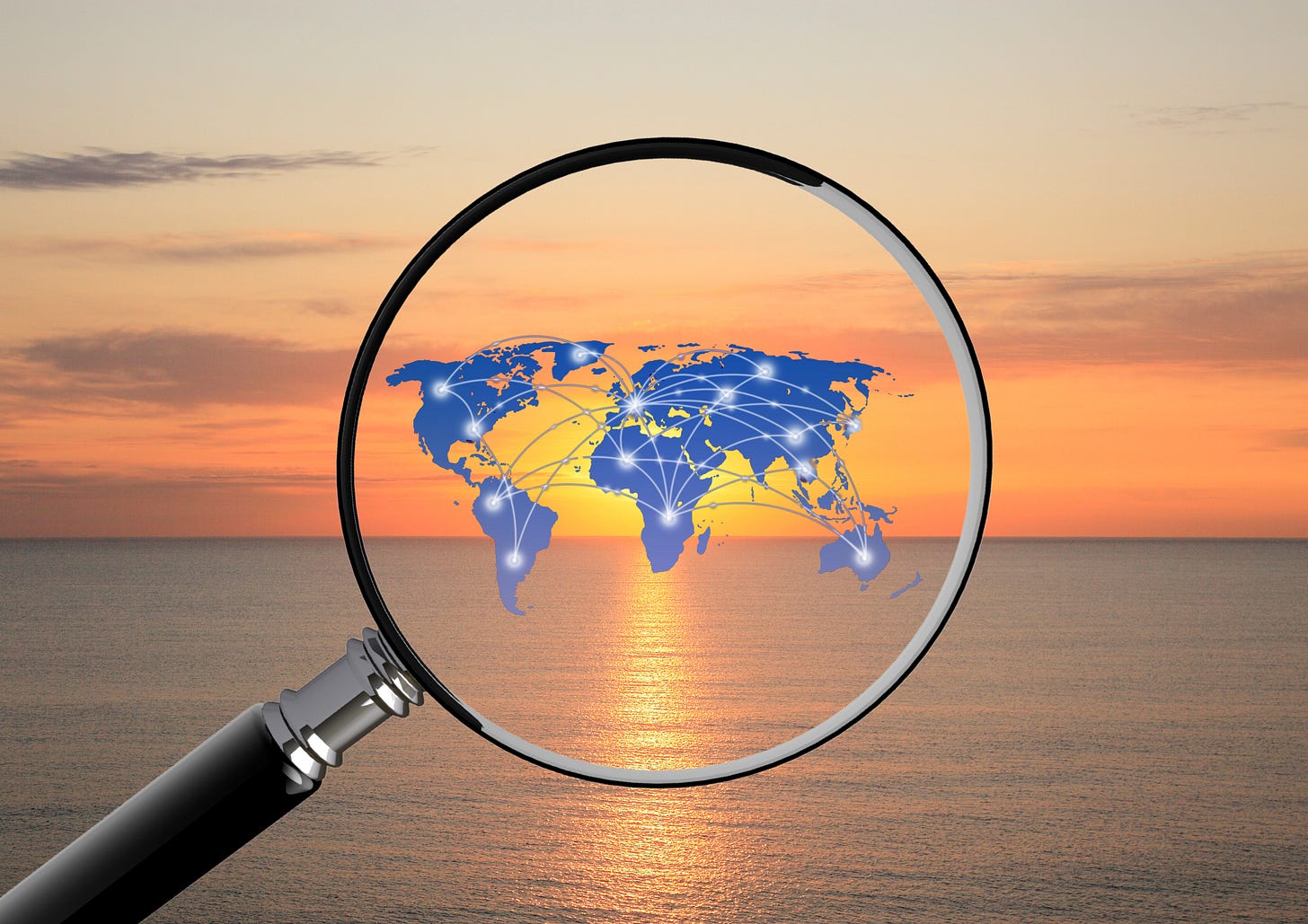The Horizon - Managed Instability
Week of 30 October 2025 - The U.S.–China truce, EU-India Trade, Argentina’s reforms, and shifting central bank signals
Top Signal: Managing Instability Through Interdependence
This week, US President Trump’s Asia tour, which included his face-to-face meeting with Chinese President Xi Jinping in South Korea, resulted in a temporary truce in the trade war. Among the key agreements, the U.S. committed to lowering tariffs on Chinese goods in exchange for continued access to rare earth minerals for a limited period. China also agreed to resume purchases of American soybeans and to enhance cooperation on counternarcotics. Later, South Korea announced it had reached an agreement on a trade deal with the U.S., including concessions following months of negotiations, with lower import tariffs on South Korean goods entering the U.S. and significant planned investments in American industries, including shipbuilding. Euronews NYT WSJ CNBC
Key Signals
World’s Major Central Banks Make Interest Rate Decisions: The US Federal Reserve this week decided to reduce its federal funds rate by 0.25% to the 3.75% to 4% range, at a time when available economic indicators suggest that job gains have slowed, the unemployment rate edged up, and inflation remains elevated. It emerged from the news conference following the Fed meeting on Wednesday that a rate cut in December is far from baked in. It also signalled an end to quantitative tightening in December. Meanwhile, in the Eurozone, the ECB Governing Council decided on Thursday to maintain key interest rates at current levels of between 2% and 2.4% as inflation remains close to the 2% target and the economy continues to grow. Meanwhile, the Bank of Japan also maintained its short-term interest rates at 0.5% as the economic outlook looks modest and the elevated consumer price index is likely to decelerate to below 2% through the first half of 2026. Fed ECB BOJ WSJ
EU-India Signal Free Trade Deal to be Ready by Year’s End: The European Union and the Indian government have signalled optimism of concluding their long-running Free Trade Agreement negotiations by the end of 2025, following three days of intensive high-level meetings in Brussels this week. An EU delegation is expected in New Delhi next week to finalise technical negotiations. The EU is India’s second-largest trading partner, while India is the EU’s 9th-largest trading partner. In September, the EU set out a new strategy to reinforce prosperity and security with India. Times of India EU Trade Data EU Commission EU Commissioner Šefčovič on X
A Relative Win for Libertarianism in Argentina: In the mid-term elections, Argentina’s President Javier Milei saw his libertarian party, La Libertad Avanza, strengthen its representation in parliament, winning about 40 % of the vote and securing enough seats to protect presidential vetoes and advance his free-market agenda. The result gives him greater legislative leverage, though he still lacks an outright majority and must build alliances to pass laws. It also signals that many Argentinians are not yet ready to abandon his economic experiment, or to return to Peronism.
In Washington, Milei’s reforms have drawn close attention. Earlier this month, the Trump administration said it was willing to support Argentina’s peso through a mix of sovereign and private-sector financing. President Trump reportedly hinted that such aid could depend on Milei’s electoral performance.
Milei, a free market economist and self-described anarcho-capitalist, rose to power in 2023 while still a political novice with no executive experience. Economists and analysts are now watching whether his radical market reforms can succeed and whether similar libertarian experiments could or should be replicated elsewhere. WSJ Le Monde AP CATO
Systems Insight
This week points to a world managing instability through interdependence.
Trump’s Asia tour produced a fragile truce, built not on trust but on mutual necessity. The U.S. gets its rare earths, China secures food imports, and South Korea leverages the moment to lock in its own industrial advantage. This is diplomacy as systems maintenance, but it is not transformation.
Meanwhile, the world’s major central banks are diverging carefully. The Fed’s small rate cut and end to quantitative tightening suggest a pivot to “controlled easing,” while the ECB and BOJ are standing firm. Together, they signal a shift from coordinated global monetary cycles towards adaptive pragmatism, with each managing domestic risks within a fragile global frame.
The EU and India are moving toward finalising their long-running free trade agreement by year’s end, another example of conditional interdependence, where mutual economic benefit outweighs domestic frictions and helps stabilize wider trade networks.
And in Argentina, Milei’s libertarian experiment gained new momentum with his election success. His relative win strengthens his reform agenda, but it also tests how far radical his market ideology can stretch before institutional limits start to push back.
Across all three arenas, one pattern stands out this week: temporary equilibria built from negotiated dependencies. Public narratives may suggest otherwise, but these are examples of systems stabilising themselves without actually resolving underlying tensions.



